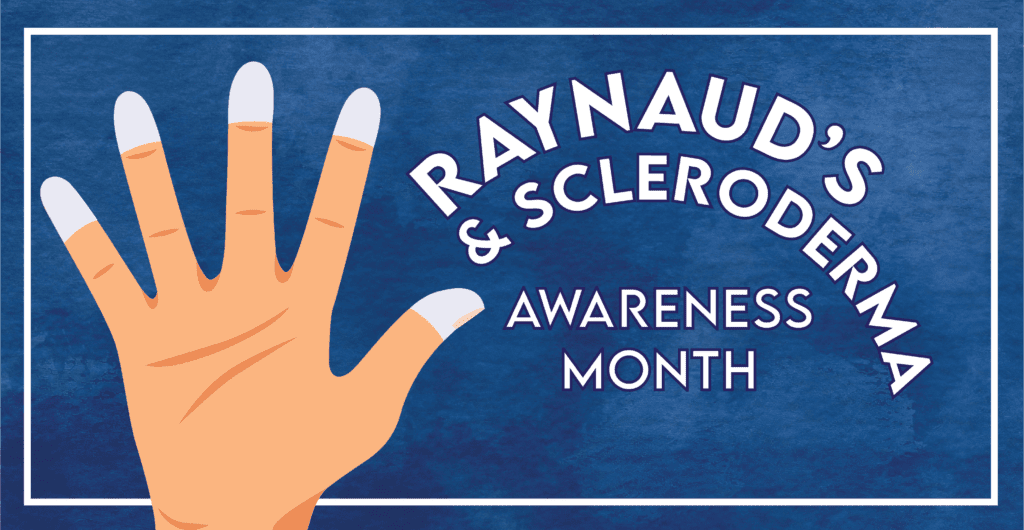Raynaud’s and Scleroderma Awareness Month
Understanding Raynaud’s disease
Raynaud’s disease means that the small blood vessels in the extremities such as the hands, feet, fingers, or toes are over-sensitive to even the slightest changes in temperature, cold conditions, and sometimes emotional stress.
When our bodies are exposed to the cold, a normal response is for the blood vessels to become narrower. When someone has Raynaud’s this reaction may be much more extreme. It will sometimes cause a noticeable color change to the affected areas, with the skin turning white, then blue, and finally red as the circulation returns. This is known as a Raynaud’s attack.
There are two different types of Raynaud’s: primary and secondary. Primary Raynaud’s is usually less serious as the condition tends to be fairly manageable. People living with secondary Raynaud’s will often experience more severe symptoms.
- Primary Raynaud’s – This is often a mild condition and there are ways to help manage the symptoms. People with primary Raynaud’s usually have no other related complications, and will rarely go on to develop an additional problem.
- Secondary Raynaud’s – This means that Raynaud’s is caused by another condition, usually an autoimmune disease like scleroderma or lupus. Secondary Raynaud’s needs more investigation and more careful monitoring for complications like ulcerations or sores.
Understanding Scleroderma disease
Scleroderma is an autoimmune condition that affects the skin and connective tissue. A person who is living with scleroderma will have an overactive immune system, meaning that the body attacks its own healthy tissues, causing hardening and scarring.
Types of scleroderma:
There are two main types of scleroderma: localized and systemic. Localized scleroderma will mainly affect the skin, and for many people, this will be a milder form of the disease. In systemic scleroderma (systemic sclerosis), some of the internal organs are involved as well, such as the heart, lungs or kidneys. Raynaud’s phenomenon is often a common symptom of both types of scleroderma.
The link between Raynaud’s and Scleroderma
Most people diagnosed with Raynaud’s will not develop scleroderma, which only affects 0.1% of everyone who has Raynaud’s. This is because the majority of people who are living with Raynaud’s will have the primary form, with symptoms of cold hands and feet and painful attacks with changes in temperature. In primary Raynaud’s however, there is no link to any other disease, including scleroderma.
Secondary Raynaud’s can be a sign of scleroderma and is caused by another, potentially serious health condition, including lupus or vasculitis as well as scleroderma. It is often the first noticeable sign of scleroderma, for example 95% of people diagnosed reported that Raynaud’s was their first symptom. If you do have Raynauds, it is important to get tested to establish whether you have the primary or secondary form, and this can be arranged by your doctor.
Although we often talk about people with scleroderma having ‘Raynaud’s symptoms’, primary and secondary Raynaud’s are actually very different, with important distinctions in the disease processes of each condition.
AMERICAN SPINE CENTER
Timing: 9am until 9pm, Saturday to Thursday.
Contact us: 800-100-999
Location: Al Razi Building 64, Block F, Dubai Healthcare City, Dubai, UAE.
Source:
